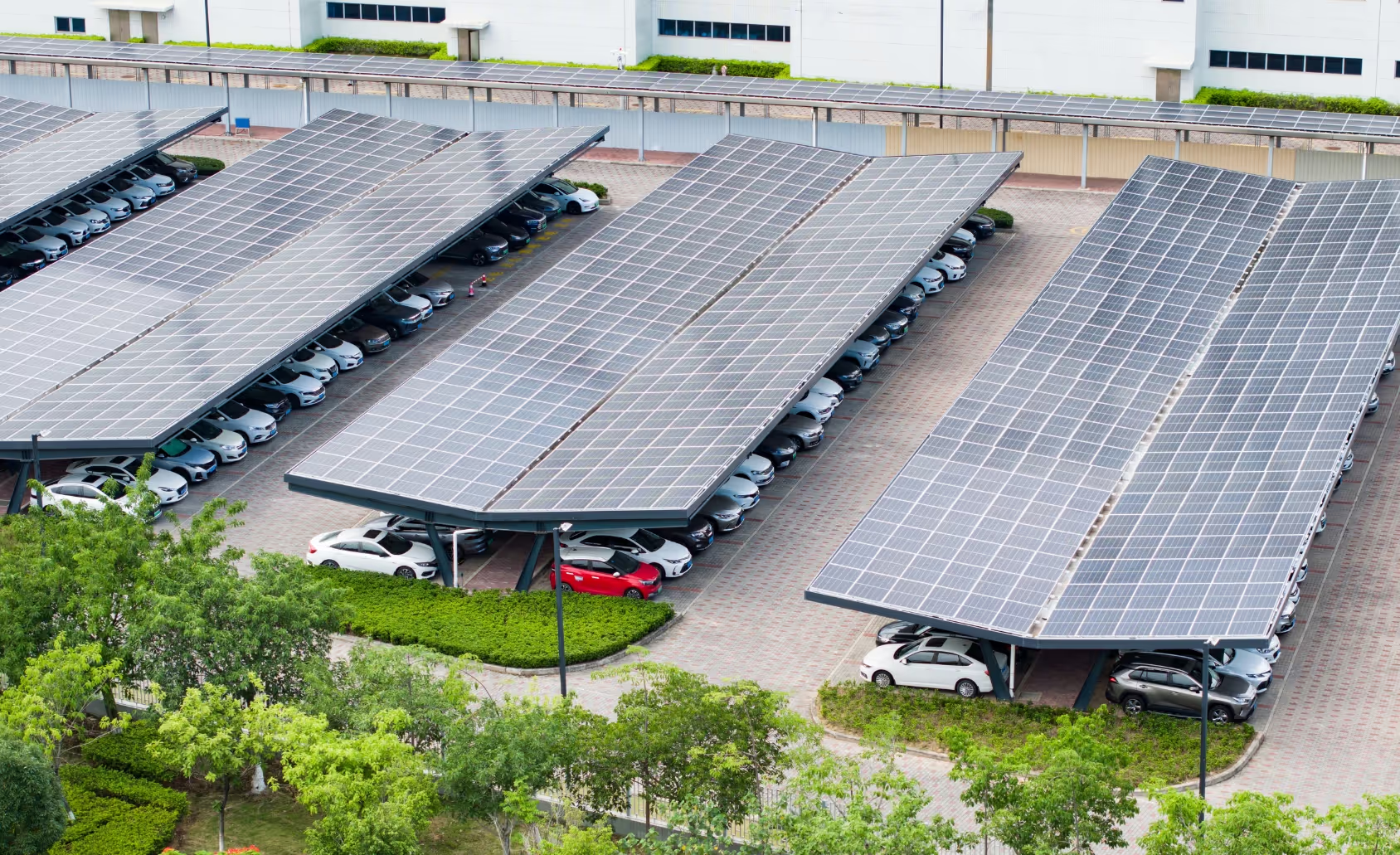In our response to the recent call for evidence on solar on car parks, we make four recommendations to enhance the policy proposed by DESNZ.

In our response to the recent call for evidence on solar on car parks, we make four recommendations to enhance the policy proposed by DESNZ.

With an estimated 40-50,000 private car parks across Great Britain, and an additional 20,000 run by councils, these sites have the potential to contribute significantly towards CP30 solar targets.
Our CP30 Dashboard shows that, when excluding projects in the queue with no planning activity, nearly all of the transmission zones in the UK have additional capacity for solar compared to the CP30 allocations.
In this context, Regen strongly supports the implementation of a policy requiring solar canopy installations on new and existing car parks.
40-50k
The number of private car parks in Great Britain, according to the Private Parking Code
14-17k
The estimated number of those private car parks that have more than 50 spaces
20k
The number of car parks run by councils
In its call for evidence on solar on car parks, the government identifies wider societal benefits including energy security and economic growth. In our response, we identify further advantages which support our clean power goals, including ease of delivery through established grid connections and the potential for community energy involvement.
Regen does not believe the policy should include a wide range of exemptions. Case studies of multi-storey retrofit projects in the UK and across France support the inclusion of these types of car parks.
We believe that car parks not under construction when the policy is implemented should be expected to integrate solar canopies. For all existing and in-construction car parks, the implementation period should extend to the end of 2030, aligning with infrastructure upgrades that are part of the Clean Power Plan.
While it is likely that network constraints would be highlighted as a barrier to implementation, we suggest that DESNZ assesses the merit of these claims using the Network Headroom Reports published by Distribution Network Operators.
We also recommend that, to enable more effective delivery, the Transmission Impact Assessment threshold in Scotland should be raised from 200 kW to between 1 MW and 2 MW.
To speak more about this area of our work, please reach out to me by email.
Sign up to receive our monthly newsletter containing industry insights, our latest research and upcoming events.